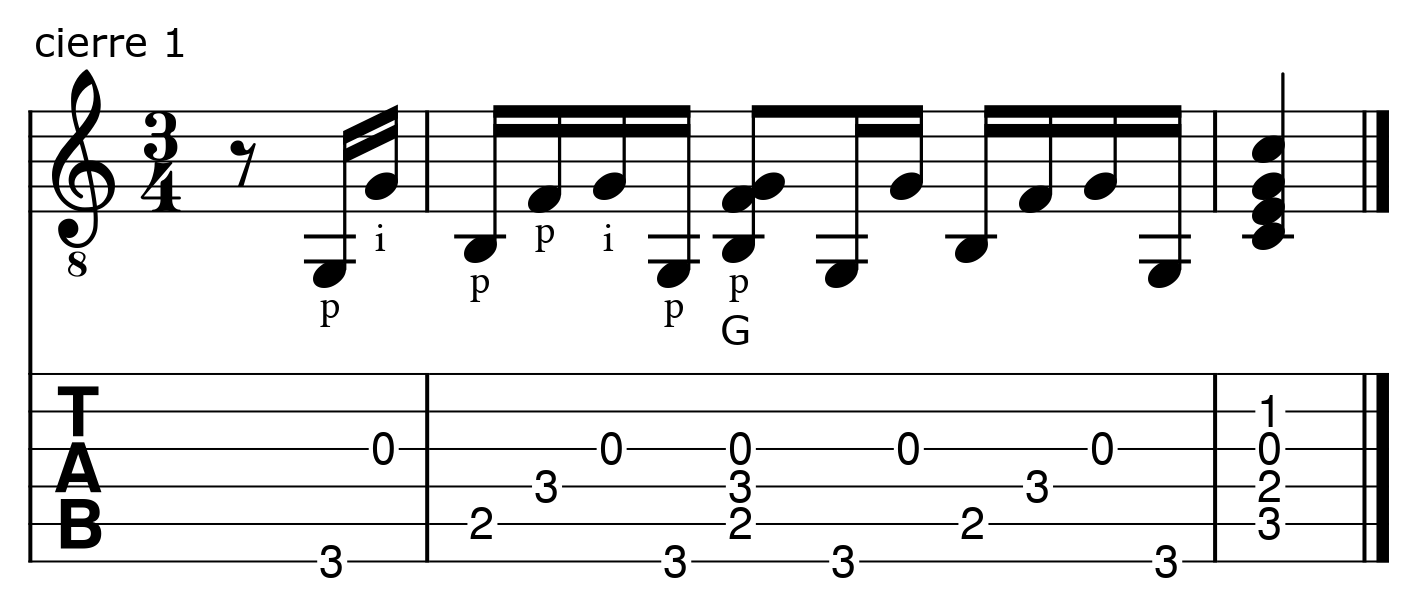
Here are six cierres and three short falsetas in a single audio file. When this style is played on the guitar without singing, it is usually called cantiñas or alegrías, and when it is played to accompany singing it would be called alegrías, cantiñas, caracoles, mirabrás or romeras, depending on the style being sung. The 12-beat asymmetrical flamenco rhythm (compás) is present in all of these styles and in soleá and bulería.
Cierres are concluding phrases, and the following scores show beats 7 to 10.

Cierre 1 (0:03-0:04). Everything with thumb and index. The idea is from a recording of Camarón in which Tomatito plays the same rhythmic pattern with alzapúa (thumb only) and changes to C on the ninth beat.
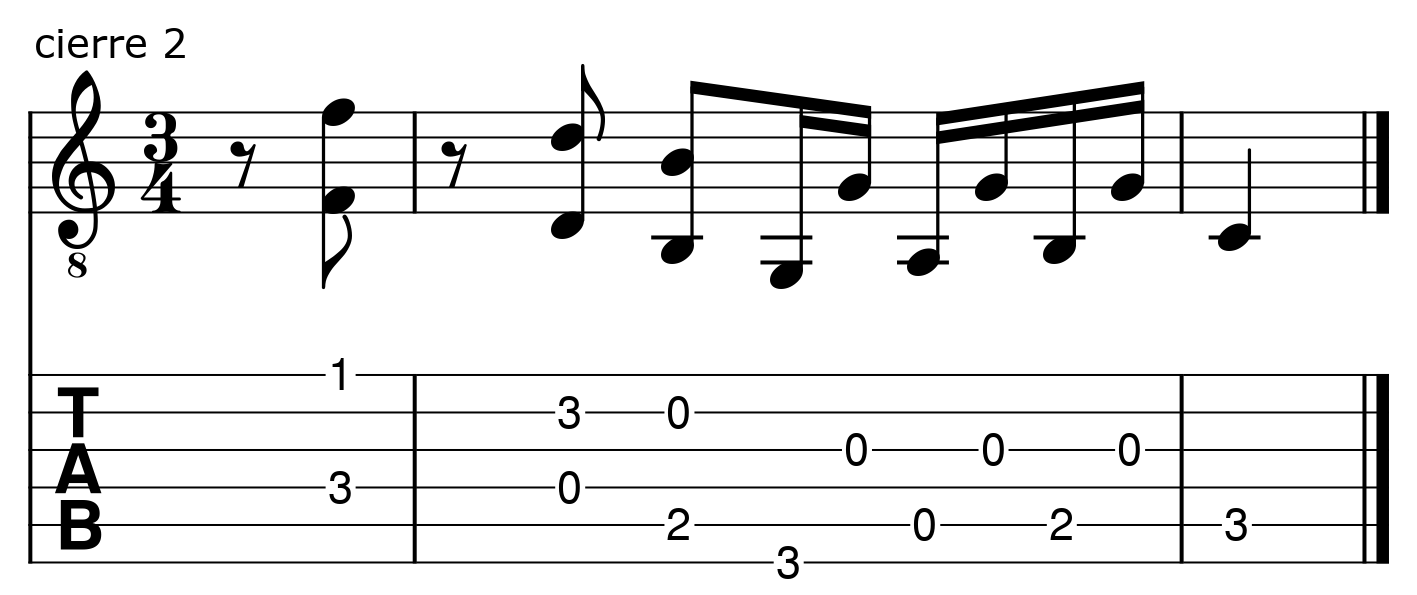
Cierre 2 (0:08-0:09). Everything with thumb and index. The rhythmic counterpoint at the end also appears in cierre 5.
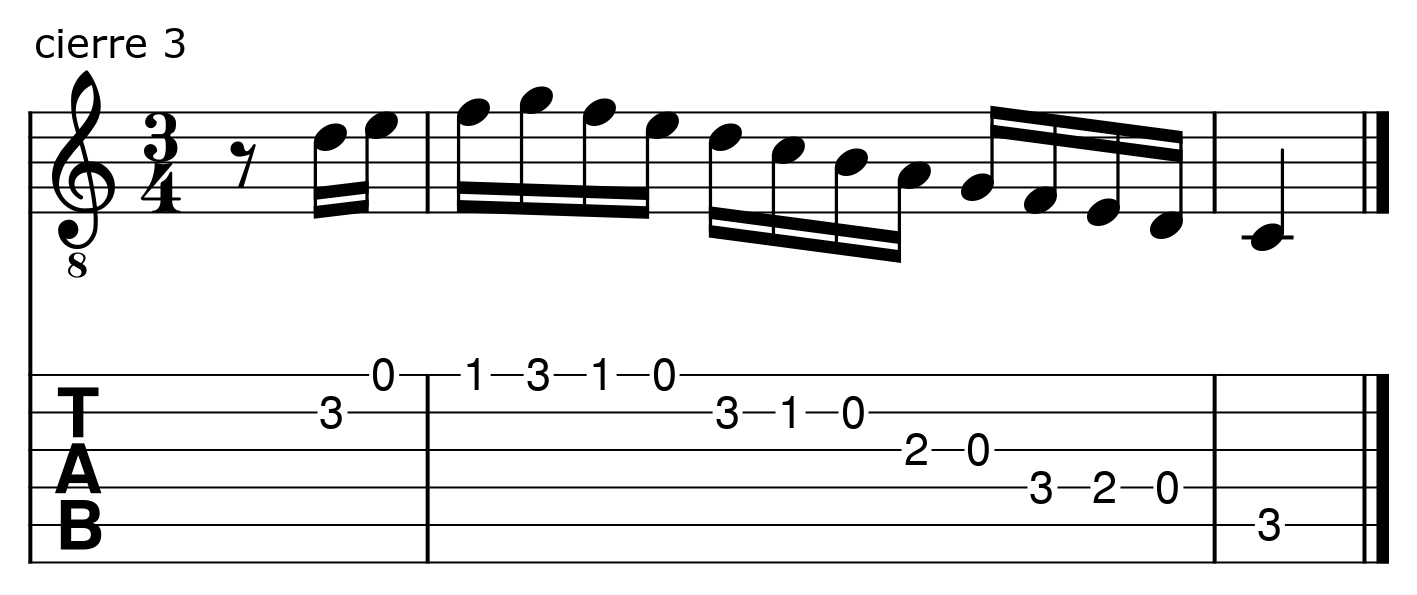
Cierre 3 (0:13-0:14). In the audio file, which was recorded many years ago, I end on the fifth string. Now I prefer to end this cierre and others with a full chord played with the thumb (like Paco Cepero).
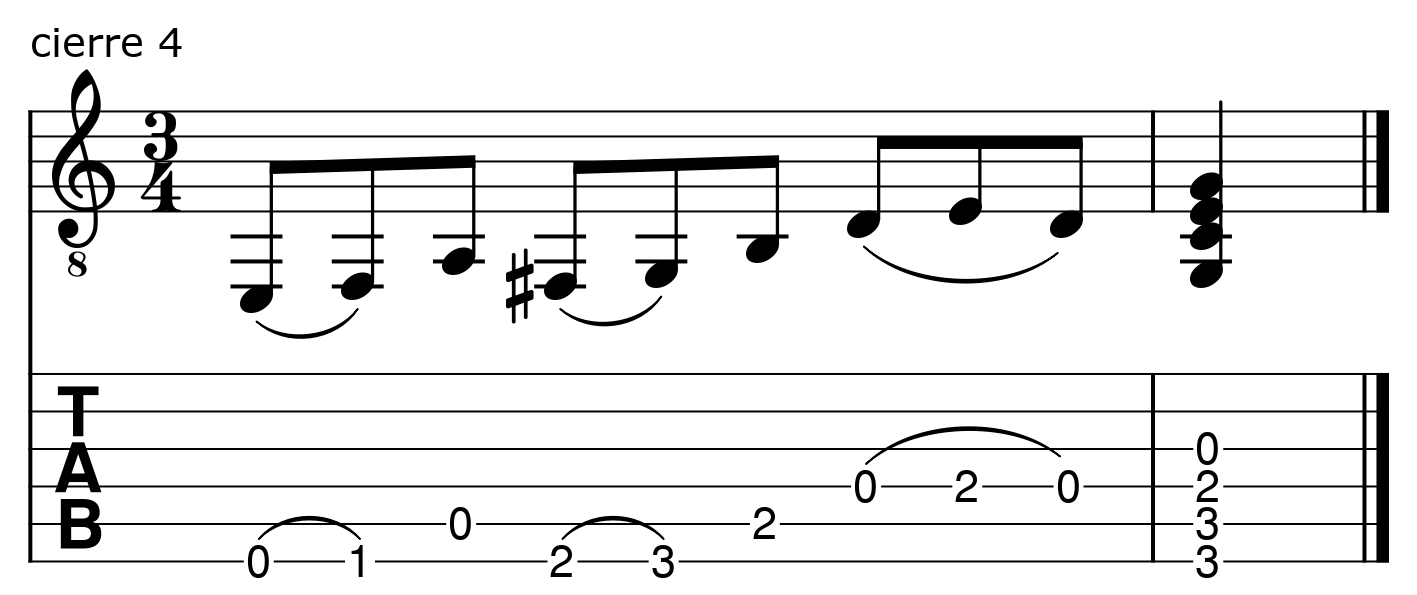
Cierre 4 (0:18-0:20). Everything with the thumb.
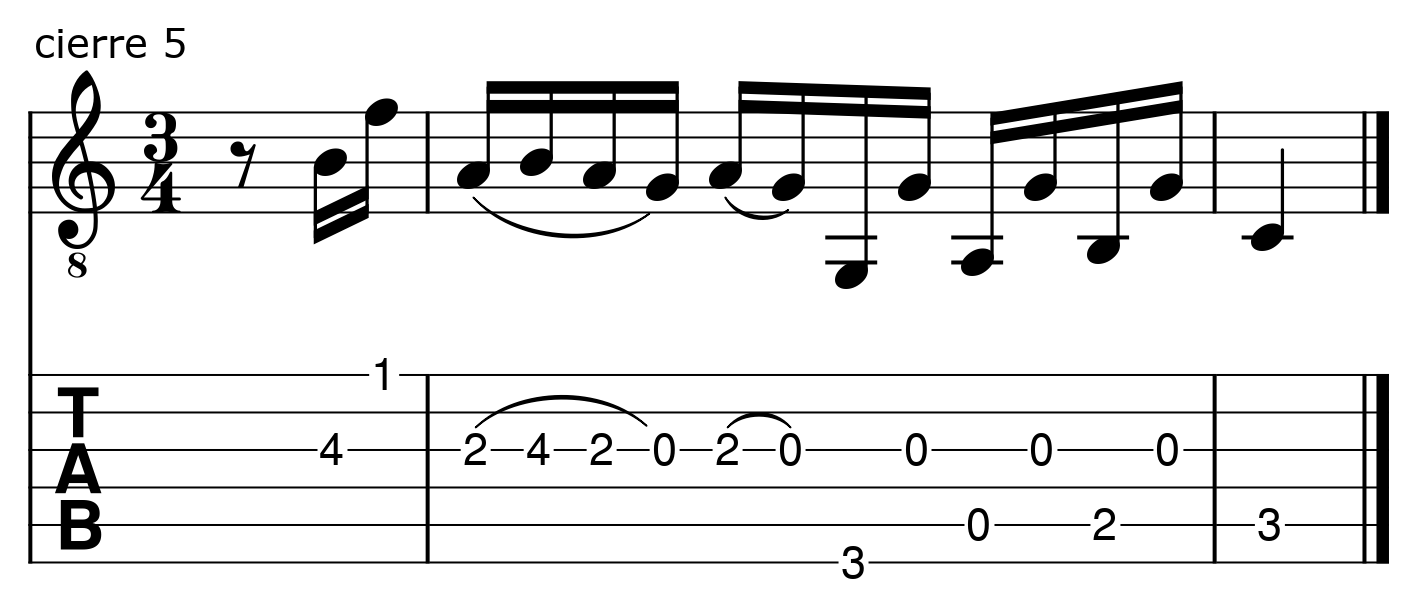
Cierre 5 (0:24-0:25). The rhythmic counterpoint at the end also appears in cierre 2. The idea comes from the playing of Pepe Núñez and Jose María Molero.
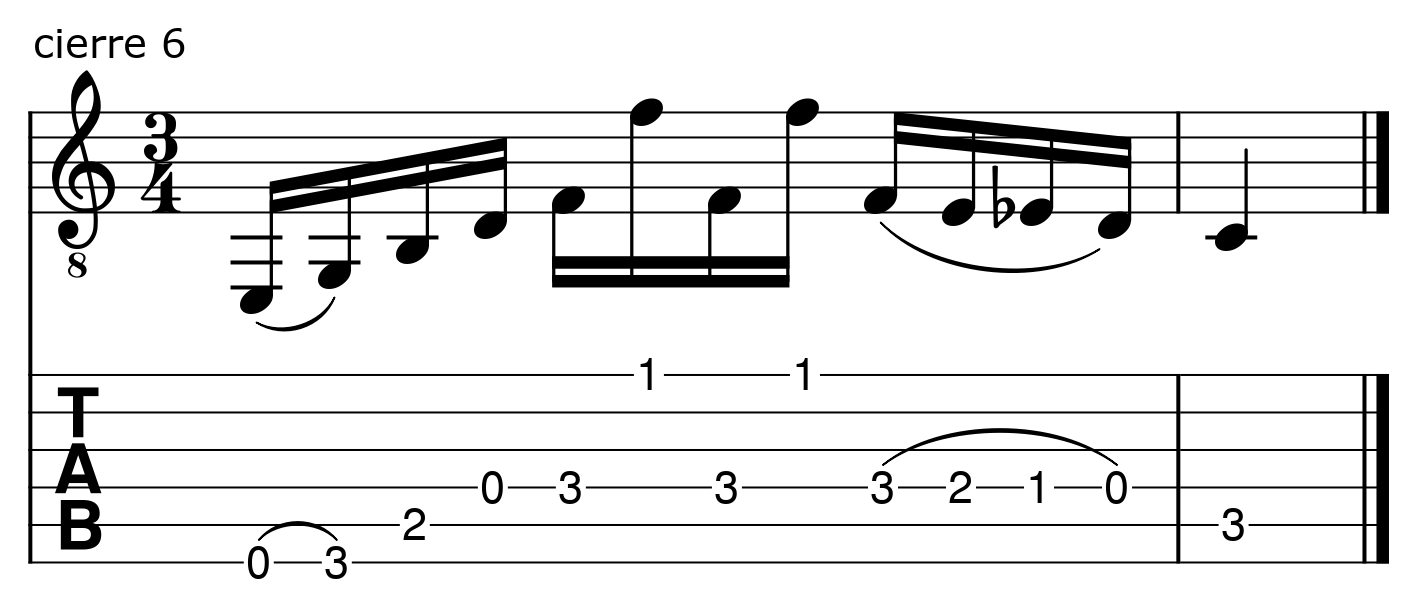
Cierre 6 (0:34-0:35). Another way to work in the rhythmic counterpoint. For beats nine and ten, try to play and slur the F on the fourth string with the left-hand little finger. If this is difficult, go over it thoroughly to eliminate any unnecessary tension in your hand.
Falseta 1 (0:42-0:46). With thumb and index. Works in E, too. Sounds like Niño Ricardo.

Falseta 2 (0:47-0:51). I got this idea from Pepe Núñez. The last two rasgueados can also be played in thirty-second notes fingered q-a-i-p-q (the q indicates a thumb upstroke).

Falseta 3 (1:03-1:07). Inspired by "Recordando Esencias" by Pepe Habichuela. The downward arrow means that the strings are played from the trebles to the basses (so, an index upstroke). The q indicates a thumb upstroke. The taps at the end are called capirotazos, which are index-finger taps that follow through to strum the strings (tap with the flat of your nail on the upper bout ).

